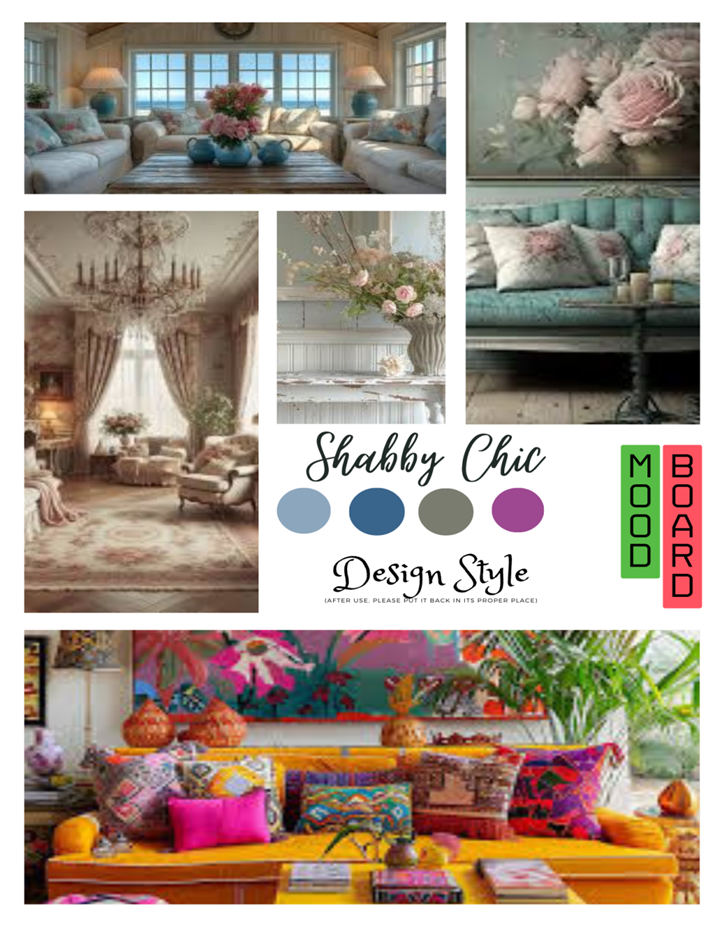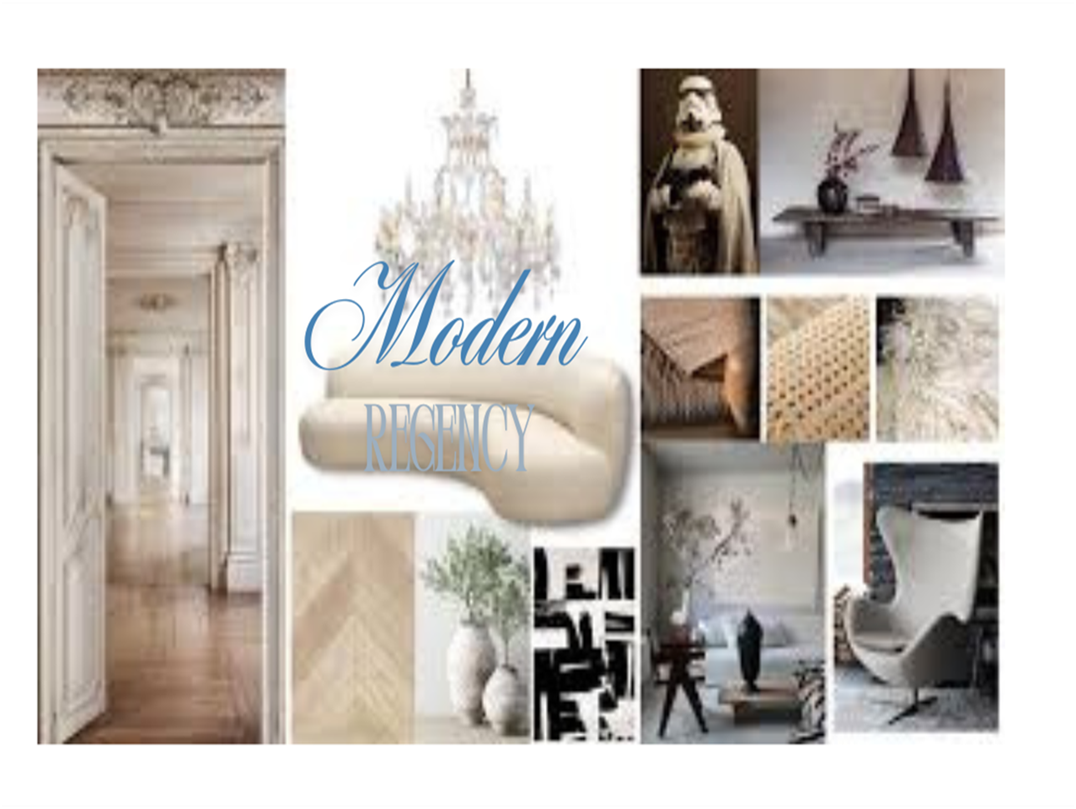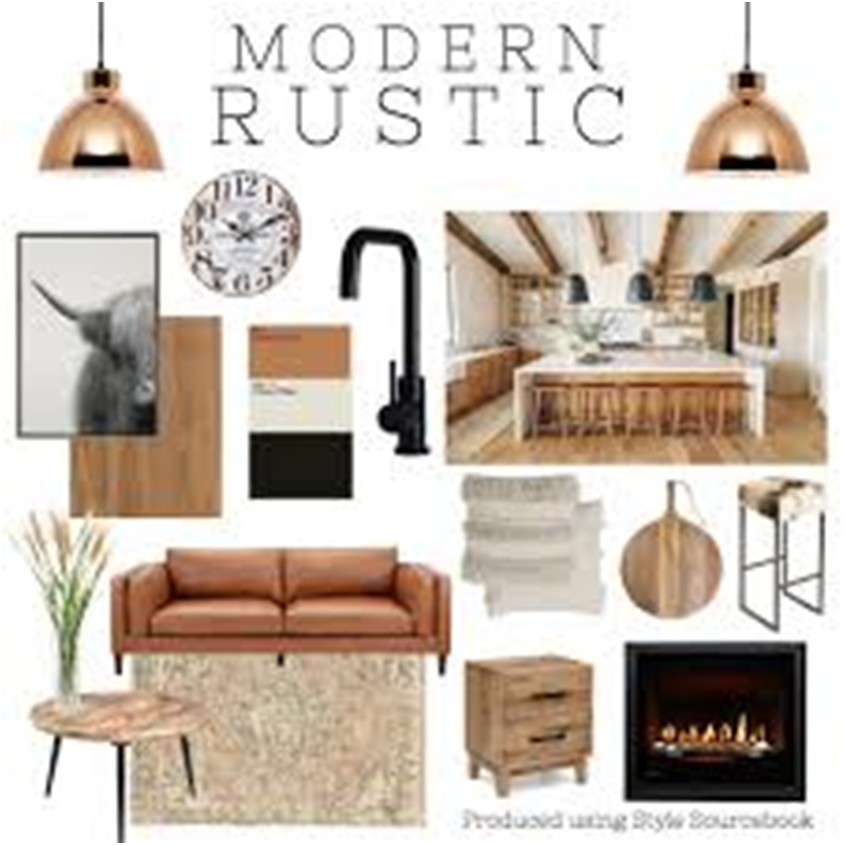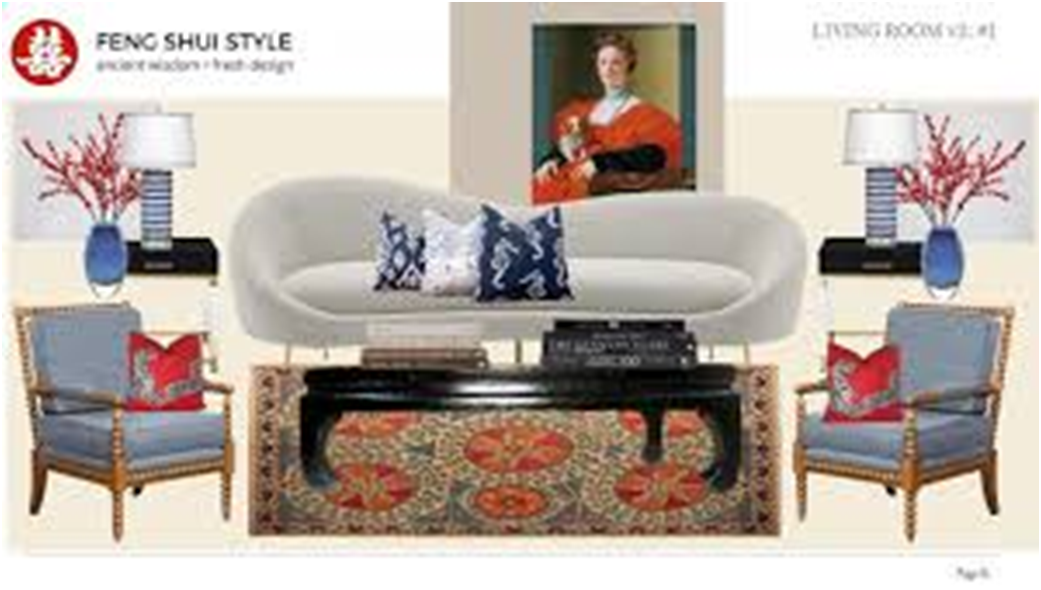1. Mid-Century
Modern
The interior design style known as Mid-Century Modern first came
to prominence after World War Two, bridging the decades between 1940 and 1970.
The style is defined by an emphasis on vibrant colors in wall art, paint
palettes, and textiles, while furniture in this style is frequently made of
natural materials. Due to resources at the time, minimalism and functionalism
became central considerations of the design movement, while clean silhouettes,
indoor plants, and warm wood fittings provide a distinctly Danish
feel.
2. Minimalist
The
central idea behind Minimalism is
“less is more”, with minimalist designers promoting the reduction of clutter
and the simplification of interiors in order to promote the richness that can
be found in emptiness. With elements taken from Japanese Zen Philosophy,
minimalist interior designers seek to create calm, pure, and harmonious spaces.
This is achieved through the use of features such as white walls, neutral color
palettes, natural flooring, and the reduction of visual distractions.
3. Scandinavian
The
Scandinavian style of interior design represents a mixture of styles hailing
from Norway, Sweden, Denmark, Finland, and Iceland and encapsulates simplicity,
functionality, and a minimalist aesthetic. The style differs from Minimalism in
that it creates a warm, relaxed, and inviting feeling through the use of
natural light and neutral colors, while bare arrangements and clean detailing
show the prioritization of affordability over basic necessity. Frequently seen
in Scandinavian-style interiors are the use of tonal textural pieces, the use
of natural wood for furniture and accessories, and more industrial pieces for
lights and shelving.
4. Shabby Chic
With
a history in vintage French design, Shabby Chic speaks to a lived-in yet
elegant look that incorporates country farmhouse and antique elements. Features
of a shabby chic interior could include ornate gilded mirrors, white-painted
floorboards, natural fabrics, distressed wooden furniture or fittings, and soft
or pastel color palettes. Though accessories or furniture may appear worn or
used, the overall effect of the style is timeless and romantic.
5. Bohemian
Bohemian (also known as “Boho”) is an interior design style that marries multiple aesthetics and cultural influences to create a laid-back and miscellaneous look. Taking elements from nature and combining contrasting patterns and colors, Bohemian interiors take a maximalist approach to accessories and decoration, with fans of the style trawling vintage markets and artisan stores to find unique pieces to decorate their homes with.
Taking
inspiration from the sea, beach, and natural landscape of the coast, Coastal
interiors use vibrant neutrals, natural light, and found objects to mirror the
impression of space, illumination, and calm associated with seaside living.
Color palettes frequently include light blues, creams and neutrals, while
furniture is also kept light, with whitewashed furniture and floorboards
creating the illusion of more light and space. Shells, stones, driftwood, and
glass are popular centerpieces in Coastal homes, with crisp white textiles further
bolstering the feeling of freshness in the room.
7. Art Deco
With
its roots in 1920s France, Art Deco–short for the French Arts Décoratifs– is a
visual arts, architecture, and product design style that has been adopted by
interior designers seeking to represent the glamour of the period in homes and
interiors. Mirroring the luxury and decadence that defined the era, Art Deco
evokes opulence through the use of rich textiles, bold colors, jewels, and
ornate decoration, while furniture and statement centerpieces come in geometric
forms and are made from luxury materials such as marble, mirrored glass, and
lacquer.
8. Modern Farmhouse
Modern Farmhouse is an interior design style that offers a modern twist on its more rustic cousin. It does this through the use of a less cluttered, more minimal approach combined with a pared-back and neutral color palette. Mid-century furniture and industrial elements can be incorporated to give a more contemporary feel. Exposed wood beams, vintage accent pieces, and house plants complete this modern makeover of the traditional farmhouse look.
9. Neo Industrial
Interiors
designed in a Neo Industrial style offer a fresh take on increasingly popular
factory-inspired interiors. The look champions the aesthetic pleasure of raw
and unprocessed materials while celebrating the marriage of form and function
to create beautiful yet livable interiors. Elements that you might expect to
see in a Neo-Industrial style interior include exposed brickwork, concrete,
steel, and wood, with the imperfections and natural textures of these materials
highlighted throughout the space.
10. Maximalist
Maximalist
interior design rejoices in a “more is more” philosophy. Embracing layers of
bright colors, clashing patterns, contrasting textures, and eclectic
collections of artwork, the aim of maximalist is to showcase the personality of
the homeowner in a carefully curated, and sometimes chaotic, display. Due to
the value placed on the individual tastes of the homeowner, each Maximalist
style interior will be unique to the person designing it. A good rule of thumb
is to aim for bright prints, and lots of contrast, and to place your unique
finds and treasured positions at the center of each room.
11. Memphis
A
playful take on postmodernism, graphic patterns, bold color palettes, and
square tiles feature heavily in Memphis-style interior design. Coming to the
fore in the 1980s, the style encourages the use of geometric shapes and
mismatching decor. Items that are generally associated with the look include
the iconic Ultrafragola mirror or the Carlton bookcase.
More modern takes on the Memphis aesthetic champion the incorporation of
arches, curves, shapes, neon, and color into the room, while extravagant house
plants feature heavily both in new and older versions of the trend.
12. Regency
Regency
style speaks to opulence and grandeur with touches of the exotic thrown in as a
nod to overseas adventures. Animal masks used as decor elicit a flamboyant
feel, while key pieces include heavy drapes, high-backed chairs, chandeliers,
and gilded mirrors. Materials favored by this style include dark, heavy woods
such as mahogany or rosewood, and brass inlays, while chair legs are typically
designed to be column-, concave-, or X-shaped.
13. Contemporary
The
Contemporary interior design style refers to what is in fashion right now–a
unique blend of subtlety and sophistication. Contemporary interiors generally
include minimal elements combined with high-tech details, with room layouts
that are more streamlined than typically modern interiors. Designers who favor
this style tend to focus on craftsmanship, textiles, and a color palette
comprising black, white, and neutral tones, while the goal of the design is to
make the most of each individual environment and optimize functionality.
14. Art Moderne
Art
Moderne, also known as American Modern or Modernist, is all about bold design.
Hailing from the US in the 1930s, striking patterns, clear lines, bright
colors, and simple, geometric shapes dominate homes decorated in this style.
Designers with a preference for Art Moderne produce an aesthetic that is less
cluttered and more functionality-oriented than the Art Deco interior design
style; the Art Moderne movement is generally considered to be a more
contemporary take on traditional interior design principles.
15. Eclectic
Homes
which seek to champion the Eclectic interior design style typically incorporate
elements from a range of different design approaches into one setting. Drawing
inspiration from both contemporary and traditional interiors, the aesthetic
brings together a mixture of furniture and accessory styles while wallpaper and
textile choices which exhibit clashing colors and mismatched patterns are
actively encouraged.
16. Farmhouse
Interiors
designed with the Farmhouse style in mind are defined by the use of wood
elements in furniture, floorboards, and accessories, while white and cream
tones for walls and textiles give a room a fresh, outdoorsy feel. The most recognizable
element of the Farmhouse style of interior is the incorporation of distressed
furniture. This is furniture that has been painted and then purposefully sanded
down to give a more lived-in look. In general, Farmhouse-style interiors
prioritize practicality and comfort over striking design choices, while soft,
light furnishings and neutral-colored rugs are also popular additions to a
Farmhouse-style room.
17. French Country
French
Country is an interior design style inspired by the homes of the French
countryside that is recognizable by the combination of comfortable and elegant
pieces such as rustic antiques and upholstered chairs. Simple yet graceful
wooden décor or objects, such as chests, side tables, and mantelpieces are
popular choices when adopting this style, with cozy, vintage rugs and cushions
used to increase comfort and soften silhouettes.
18. Hollywood Glam
Combining
elements of Art Deco and Mid Century Modern, Hollywood Glam is the ideal choice
for those pining for more glamour in their daily lives. This decor choice
brings together rich fabrics such as velvet, silk, and satin, lacquered
finishes, fresh color palettes, mirrored surfaces, and even crystal accents,
paying homage to the Golden Age of Hollywood. Other defining characteristics
might include plush duvet covers, upholstered headboards, and bold, timeless
patterns.
19. Japandi
Dominated
by calming, neutral tones such as beiges, grays, taupes, and creams, Japandi
fuses Japanese and Scandinavian minimalist interior design styles to create serene,
balanced, and harmonious spaces. Natural elements, such as woods and clays, are
popular choices for Japandi accent pieces like vases, mugs, or pots, while
black accents are sometimes used to create contrast. Clean lines and a focus on
simplicity make Japandi an ideal choice for those with busy lives looking for a
tranquil space to come home to.
20. Mediterranean
Mediterranean-style
interior design channels the aesthetics rooted in coastal Mediterranean living,
most notably the interior design choices associated with Southern European
countries such as Spain, Greece, and Italy. Natural finishes, large views of
the outdoors, exposed beams, and a neutral or white color palette are common in
these parts of the world, as is a focus on indoor-outdoor living. Allowing the
maximum amount of light to enter the room is typical for Mediterranean homes,
combined with the intent to create large communal spaces for gatherings of
family and friends.
21. Asian Décor
Sometimes referred to as Oriental interior design, Asian Décor brings together design concepts from countries such as China, Thailand, Japan, and Malaysia. While Asian Décor will vary depending on which country the interior designer is channeling, the creation of tranquil spaces is a common theme to all interiors that come under this banner. An earth-tone color palette, the incorporation of natural materials into the space, and floral and nature-inspired motifs are also popular elements found in Asian Décor.
22. Rustic
Rustic
interior design is a broad term used to incorporate a range of interior design
styles, such as Coastal, Farmhouse, and Tuscan, to name a few. Rugged, natural
beauty is valued in Rustic homes, with exposed wood or brick and stone
centerpieces commonly seen. Those hoping to create a Rustic interior in their
own home should seek to incorporate features that highlight and emphasize the
structure of the building while using light and glass to draw connections
between outdoors and indoors.
23. Traditional
The
Traditional style of home décor has its roots in 18th and 19th century Europe
and is based on conventional ideas from that time of how a room should look.
Despite hailing from a specific time period, Traditional interiors seek to
exhibit a timeless elegance that combines warm tones and cozy fabrics with
classic choices of furniture and furnishings. Rooms are typically designed to
be functional and family-friendly, with familiar, comfortable pieces
prioritized over what’s currently in fashion. Dark wood finishes and neutral color
palettes are also popular choices in Traditional interior design.
24. Transitional
A
merging together of two distinct interior design styles–Traditional and
Minimalist–the Transitional interior design style first began to appear in
homes around the middle of the 20th century as a softer alternative to
embellished Traditional homes and stark Minimalist designs. While Transitional
design can be loosely interpreted, elements that frequently occur include
neutral color palettes, pops of colors in accessories, textiles, or artwork,
statement lighting, and furniture that combines both curved and straight lines.
25. Feng Shui
More
than just a décor choice, Feng Shui is the combination of engineering, interior
design, and astronomy principles to create a positive impact. Literally
translating to “wind and water”, it embodies the Chinese practice of
controlling flow of energy around the home. Those who practice Feng Shui focus
on how the manipulation of wind and water–two primary sources of energy–can
affect different areas of the homeowner’s or resident’s life. Commonly
incorporated elements include decluttering spaces, experimenting with color and
its effect on mood, sounds created using metal, wood, or clay (such as wind
chimes), natural light, house plants, and the placement of treasured objects in
key positions around the home.
Urban
Modern is a popular interior design choice for many apartment dwellers thanks
to its mixture of contemporary and industrial elements cushioned by warmer
tones and soft furnishings. Minimal yet comfortable features might include
plush fabrications or fluffy rugs, while large windows and steel-framed shelves
give a nod to more factory-inspired settings.



























0 Comments
archanavajra@gmail.com;milindmvernekar@gmail.com